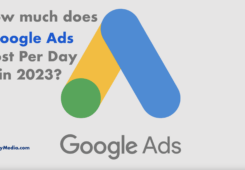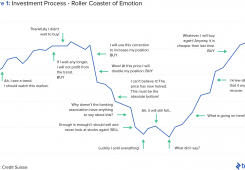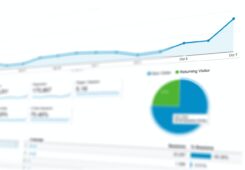Google, one of the leaders in online advertising, offers two effective options to help businesses reach their target audience and maximise online visibility. These are two platforms: Google Shopping and Search Ads.
Both platforms provide incredible opportunities for businesses to showcase their products or services to potential customers. However, it’s crucial to understand their differences and select the option that aligns with your business goals. In this article, we’ll explore the features, benefits, and considerations of Google Shopping and Search Ads, empowering you to make an informed decision and supercharge your online advertising success.
Google Shopping: Showcasing Products Seamlessly
Google Shopping, formerly known as Google Product Listing Ads (PLAs), is a platform designed specifically for eCommerce businesses. It allows businesses to display their product images, prices, and relevant information directly on the search engine results page (SERP). By integrating visually appealing product listings, Google Shopping provides a seamless shopping experience for users, increasing the likelihood of generating qualified leads and conversions.
In simple terms, Google Shopping is like having your own virtual shop window. It allows businesses to display their products prominently on Google’s search results page, with eye-catching images, prices, and essential details. When users search for specific products, they are presented with a dedicated shopping section showcasing relevant products from various businesses.
This visual and informative approach enables potential customers to compare prices, brands, and other product attributes at a glance, making it a powerful tool for businesses in the e-commerce space. With Google Shopping, you can effectively showcase your products to users actively looking to make a purchase, increasing your chances of driving qualified traffic to your online store.
What Are the Key Advantages of Google Shopping?
- Enhanced Product Visibility: With Google Shopping, your products appear prominently in the search results, capturing the attention of potential customers and increasing the chances of clicks and conversions.
- Visual Appeal: By showcasing product images alongside relevant details, Google Shopping enables businesses to create visually engaging listings that attract users’ attention and facilitate informed purchase decisions.
- Qualified Traffic: As Google Shopping displays product-specific information directly on the SERP, it attracts users actively searching for specific products, resulting in higher-quality traffic and better conversion rates.
- Easy Management: Google Shopping campaigns are structured around product data feeds, which provide a convenient way to manage and update product information, inventory, and pricing.
Why Should I Consider Google Shopping?
- Product Feed Optimisation: To maximise the effectiveness of your Google Shopping campaigns, it’s crucial to ensure that your product feed is accurate, up-to-date, and well-optimised. This involves optimising product titles, descriptions, images, and attributes to align with search intent and improve visibility.
- Competitive Landscape: Given the popularity of Google Shopping, it’s essential to analyse the competition and identify unique selling points or differentiators that can help your products stand out from the crowd.
Search Ads: Reaching Customers at the Right Moment
Unlike Google Shopping, Search Ads are text-based advertisements that appear above or below the organic search results. These ads are triggered when users search for specific keywords or phrases relevant to your business. Search Ads allow businesses to target a wide range of keywords, ensuring that their ads are shown to users actively seeking information or intending to make a purchase.
In other words, Search Ads are like having your own virtual billboard. They appear at the top or bottom of Google’s search results page, marked with an “Ad” label. Unlike Google Shopping, Search Ads are text-based and provide businesses with the opportunity to create compelling ad copy that captures users’ attention.
When users search for specific keywords related to your business or industry, your ads have the potential to appear, increasing your visibility and driving targeted traffic to your website. With Search Ads, you can reach potential customers at the moment they express an intent or need, making it an excellent option for businesses looking to generate leads or drive website traffic.
What Are the Key Advantages of Search Ads?
- Keyword Targeting: Search Ads allow businesses to target specific keywords, ensuring that their ads are displayed to users who are actively searching for products or services related to their business. This targeted approach can result in higher conversion rates and a more efficient ad spend.
- Flexible Budgeting: With Search Ads, businesses have complete control over their advertising budget. They can set daily or monthly caps, adjust bids, and monitor performance to optimise their spending and achieve the desired return on investment (ROI).
- Ad Copy Customisation: Search Ads provide businesses with the flexibility to create compelling ad copy that resonates with their target audience. By crafting enticing headlines and persuasive descriptions, businesses can increase click-through rates and drive qualified traffic to their website.
- Measurable Results: Google Ads provides comprehensive reporting and analytics, allowing businesses to track the performance of their Search Ads campaigns. With valuable insights into metrics such as impressions, clicks, and conversions, businesses can refine their strategies and make data-driven decisions.
Why Should I Consider Search Ads
- Keyword Research: Conducting thorough keyword research is crucial to identifying your business’s most relevant and valuable keywords. This process involves analysing search volumes, competition, and user intent to optimise your keyword selection.
- Ad Rank and Quality Score: Google determines the ad positions based on Ad Rank, which considers factors like bid amount, ad quality, and landing page experience. It’s essential to focus on optimising your ad quality score by improving ad relevance, click-through rates, and landing page experience.
Choosing the Right Option for Your Business
Now that we have explored the features of Google Shopping and Search Ads, how do you choose the right option for your business? It ultimately depends on your goals, industry, and target audience. If you operate an e-commerce business and want to showcase your products visually, Google Shopping can be a game-changer for you.
On the other hand, if your goal is to increase website traffic or generate leads, Search Ads might be the ideal choice. It’s essential to consider factors such as your budget, competition, and the nature of your products or services.
A well-rounded online advertising strategy may even include a combination of Google Shopping and Search Ads to maximise your reach and impact.
To sum up, Google Shopping and Search Ads are powerful tools that can significantly impact your online advertising success. Whether you choose to leverage Google Shopping’s visually appealing product listings or utilise Search Ads’ precise keyword targeting, it’s crucial to monitor and optimise your campaigns continuously. By keeping abreast of industry trends and implementing best practices, you can stay ahead of the competition and drive your business towards sustainable growth.

































